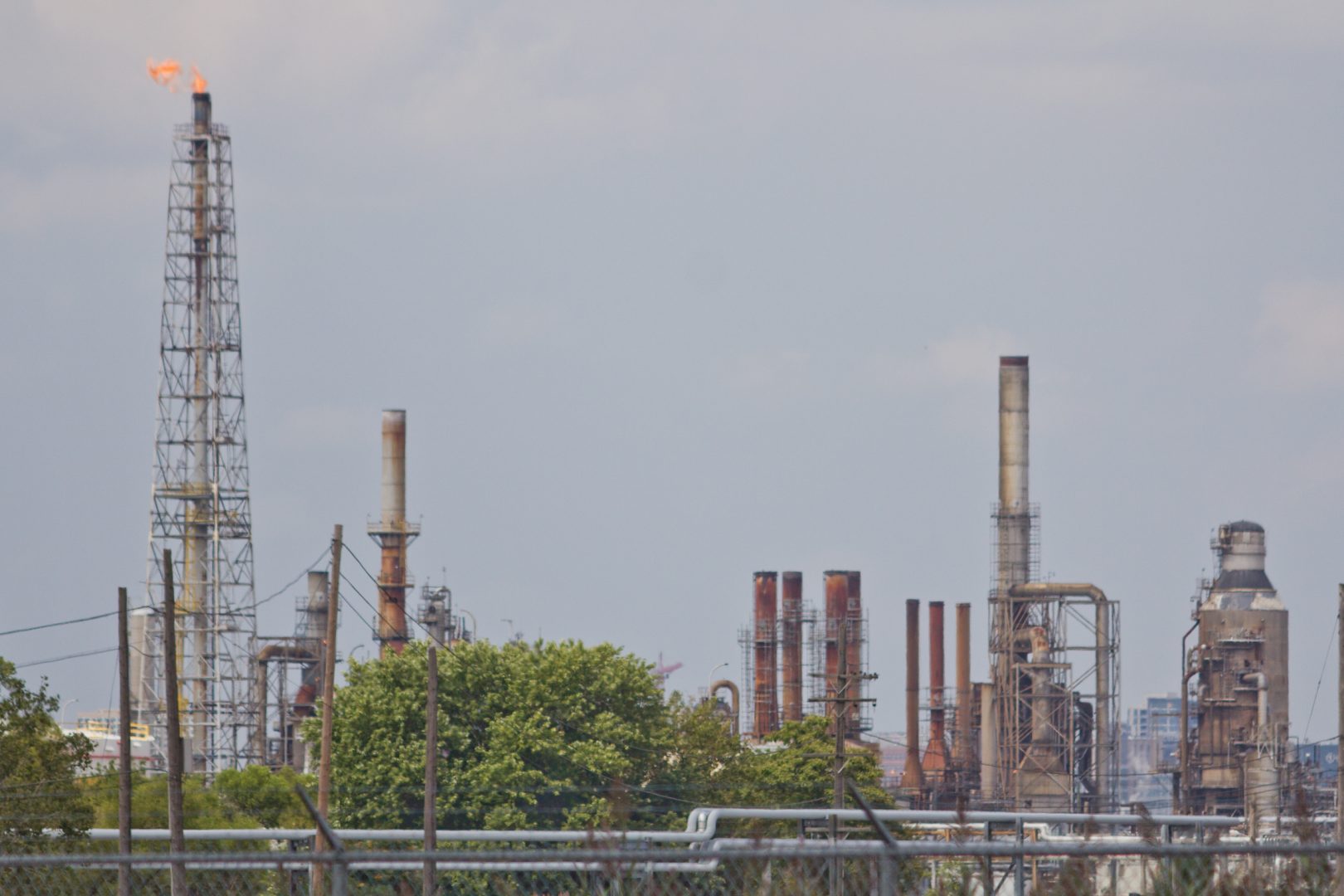
‘Great progress’ in South Philly refinery cleanup, fire commissioner says
About half of the original 30,000 gallons of highly toxic hydrofluoric acid remains. “A good week,” Philadelphia Fire Commissioner Adam Thiel says.
-
Susan Phillips

The dangerous task of disposing of a toxic chemical at the Philadelphia Energy Solutions refinery has had “very good results,” leaving about half of the original 30,000 gallons of hydrofluoric acid remaining, according to city officials.
“I’m pleased to say we’ve had a very good week,” Philadelphia Fire Commissioner Adam Thiel said. “We’re fortunate that we have not had any injuries. … Great progress has been made.”
Philadelphia Energy Solutions workers, along with contractors, began neutralizing hydrofluoric acid at the South Philadelphia refinery last week, more than a month after an explosion and fire destroyed the unit that used the chemical to create high-octane gasoline.

Philadelphia Fire Commissioner Adam Thiel gives an update on the continuing clean up of hydrofluoric acid at the PES refinery Friday afternoon. (Kimberly Paynter/WHYY)
Hydrofluoric acid, or HF, was integral to the process at the alkylation unit that blew up June 21. A PES employee quickly transferred the chemical to another container after the explosion, saving workers and the surrounding neighborhood from what experts say could have been a catastrophe.
But tens of thousands of gallons of HF remained after the fire itself was contained.
Thiel said that despite the progress, his department remains vigilant.
“It’s a relatively simple process, but at this scale it becomes very complex and very high risk,” he said Friday afternoon.
At room temperature, HF is a gas, but for industrial use it is dissolved into a liquid solution. Swallowing just a small amount of HF or getting small splashes on the skin can be fatal, according to the Centers for Disease Control and Prevention. The acid molecules are very small and can easily penetrate the skin and get directly into bones, where the acid reacts with calcium and effectively dissolves the bones.
In the gaseous state, the CDC says, low levels of HF can irritate the eyes, nose and respiratory tract. Breathing it at high levels “can cause death from an irregular heartbeat or fluid buildup in the lungs.”
Neutralizing the HF brings those risks to the fore.
Neutralizing an acid involves adding a base — the sort of lab process, known as titration, that many people do in high school and that results in a neutral solution of water and salt. But such a reaction can be dramatic and dangerous. The erupting spectacle of vinegar and baking soda is a low-level example of what can happen over the course of such a process.
“We are always emphasizing safety versus speed,” said Thiel. “Anytime you mix an acid and a base it creates heat.
As the solution heats up, some of the dissolved HF gas can become airborne. The risk at the refinery is compounded by the fact that there is so much HF to neutralize.
“We want to make sure we protect people who are doing that work,” said Thiel.
He said the Fire Department, along with officials from the Office of Emergency Management and other state and federal agencies, have been meeting daily with PES to discuss plans for an accidental release.
As part of the refinery’s risk management plan, which Philadelphia Energy Solutions is required to submit to the Environmental Protection Agency, a worst-case scenario for release of the toxic chemical would have involved 143,262 pounds — or approximately 13,000 gallons — of HF over 10 minutes. The vapor cloud could have traveled for more than seven miles and potentially affect 1,098,799 people, including those in schools, homes, hospitals, prisons, playgrounds, parks, and a wildlife sanctuary.
The chemical is also used at the Monroe Energy plant in Trainer, Delaware County, and at PBF’s Paulsboro refinery in Paulsboro, N.J.
Philadelphia Energy Solutions filed for Chapter 11 bankruptcy soon after the June 21 explosion, and is eager to find a buyer.
At least three prospective buyers have shown interest in the facility, with potential plans to restart the refinery with the addition of alternative energy production, sources familiar with the plans told Reuters.
Reuters reports that PES needs more than $1 billion in insurance money to emerge from bankruptcy, but that so far the company’s request for payment has been denied. That could lead the company to file for Chapter 7 liquidation.
Emily Pontecorvo and Dana Bate contributed to this report.
















